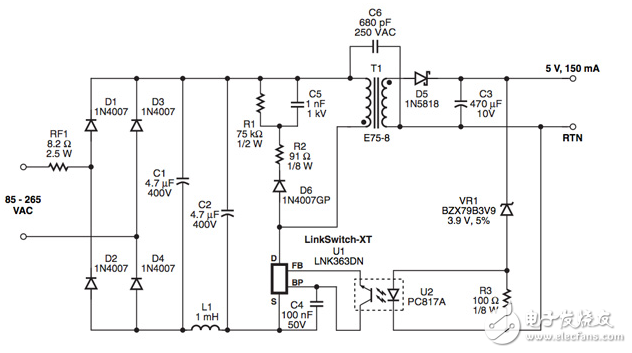
资料下载

智能电表的电源设计
智能电表的电源设计
智能电表的电源设计者面临着一系列的问题。他们不仅需要考虑诸如能源效率之类的典型问题,而且如果供电失败,也需要考虑诸如欺诈和正确操作等问题。
从低功率水平运行的能力是重要的。只有智能电表有豪华的电网电源,即使在这种情况下,消费必须尽量减少,因为运行设备的权力来自实用程序,而不是从客户。另一方面,燃气和水表需要能够从电池运行,并保证寿命为十年或更长时间。这严重制约了功率变换器的效率以及剩余的仪表电子学。
同时,这些新型仪表需要能够支持32位微处理器和更大的内存大小,以便它们能够提供加密功能,以及通过无线通信进行更细粒度的使用测量和数据更新。如果外部电源故障,电表需要能够发送通知给公用事业,要求使用后备能源战略。

Tampering is one key problem that smart meter designers have to face. One method used on electricity meters is to disrupt the measurements taken by current transformers that are used to measure alternating current (AC)。 As a transformer, this sensor has a primary winding, a magnetic core, and a secondary winding. The AC flowing in the primary produces an AC in the secondary, which can be measured by the meter using a shunt resistor.
The transformer used for current sensing can, with relative ease, be saturated using strong rare-earth metal magnets, preventing the meter from sensing the change in current. As a result, the transformers are now often shielded. However, would-be fraudsters may still try to tamper with the meter and, without realizing it, damage the power supply circuitry.
声明:本文内容及配图由入驻作者撰写或者入驻合作网站授权转载。文章观点仅代表作者本人,不代表电子发烧友网立场。文章及其配图仅供工程师学习之用,如有内容侵权或者其他违规问题,请联系本站处理。 举报投诉
- 相关下载
- 相关文章






